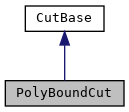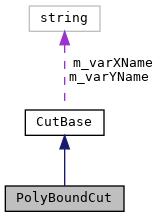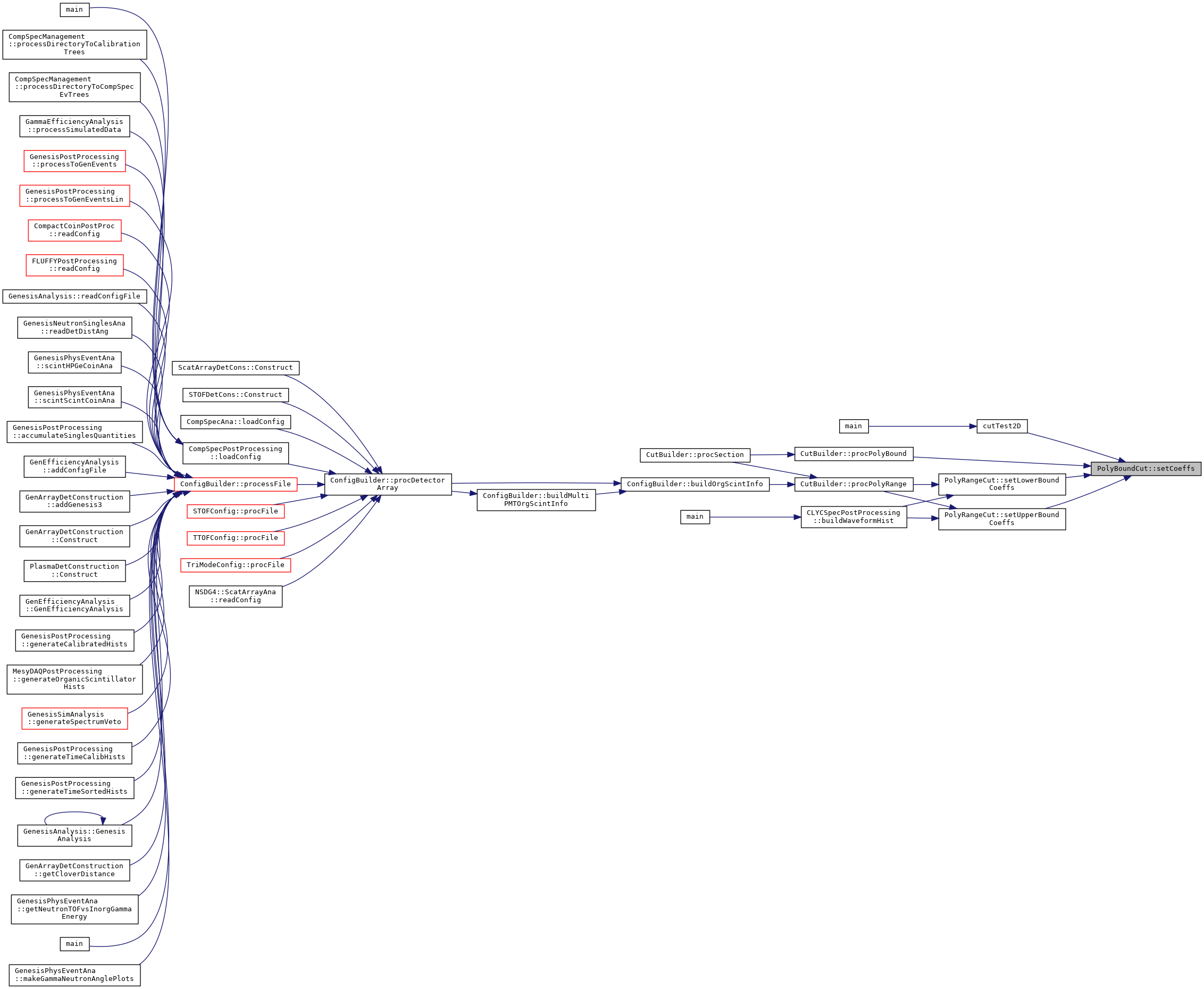#include <CutClasses.h>
Inheritance diagram for PolyBoundCut:

Collaboration diagram for PolyBoundCut:

Public Member Functions | |
| PolyBoundCut () | |
| default constructor makes this a linear cut above 0. More... | |
| void | setCoeffs (std::vector< double > a_coeffs) |
| void | setUpper (bool a_log) |
| std::vector< double > | getCoeffs () const |
| bool | isUpper () const |
| bool | passesCut (double a_X, const std::vector< double > &a_Ys={}) const |
| std::vector< std::pair< double, double > > | getNPoints (int a_N, double a_minX, double a_maxX) |
| std::vector< std::pair< double, double > > | getLine (int a_N, double a_minX, double a_maxX) |
| PolyBoundCut * | clone () |
 Public Member Functions inherited from CutBase Public Member Functions inherited from CutBase | |
| CutBase () | |
| std::string | getVarXName () const |
| std::string | getVarYName () const |
| void | setVarXName (std::string a_varXName) |
| void | setVarYName (std::string a_varYName) |
| void | setRange (double a_min, double a_max) |
| TCutG * | getTCut (int a_N=10, double a_minX=0, double a_maxX=0, std::string a_name="CUTG") |
| virtual | ~CutBase () |
Additional Inherited Members | |
 Protected Attributes inherited from CutBase Protected Attributes inherited from CutBase | |
| std::string | m_varXName |
| std::string | m_varYName |
| double | m_rMin |
| double | m_rMax |
| bool | m_hasRange |
Detailed Description
this implimentation of the of cut base is used to provide either a lower or upper boundary cut defined by an Nth order polynomial.The polynomial is ordered by exponent power and needs to include all powers present For example to obtain 2x^2 + 4 you would need to set the coefficients to {2,0,4}
Constructor & Destructor Documentation
◆ PolyBoundCut()
| PolyBoundCut::PolyBoundCut | ( | ) |
default constructor makes this a linear cut above 0.
Here is the caller graph for this function:

Member Function Documentation
◆ clone()
|
virtual |
◆ getCoeffs()
| std::vector< double > PolyBoundCut::getCoeffs | ( | ) | const |
Here is the caller graph for this function:

◆ getLine()
| std::vector< std::pair< double, double > > PolyBoundCut::getLine | ( | int | a_N, |
| double | a_minX, | ||
| double | a_maxX | ||
| ) |
this will generate a discrete representation of the internally stored polynomial containing the specified number of points
Here is the call graph for this function:

Here is the caller graph for this function:

◆ getNPoints()
|
virtual |
◆ isUpper()
| bool PolyBoundCut::isUpper | ( | ) | const |
◆ passesCut()
|
virtual |
this function is used to test if the value of a_Y[0] is greater to or less than the set polynomial evaluated at a_X.
Implements CutBase.
Here is the call graph for this function:

Here is the caller graph for this function:

◆ setCoeffs()
| void PolyBoundCut::setCoeffs | ( | std::vector< double > | a_coeffs | ) |
Here is the caller graph for this function:

◆ setUpper()
| void PolyBoundCut::setUpper | ( | bool | a_log | ) |
Here is the caller graph for this function:

The documentation for this class was generated from the following files:
- BasicSupport/include/CutClasses.h
- BasicSupport/src/CutClasses.cpp

